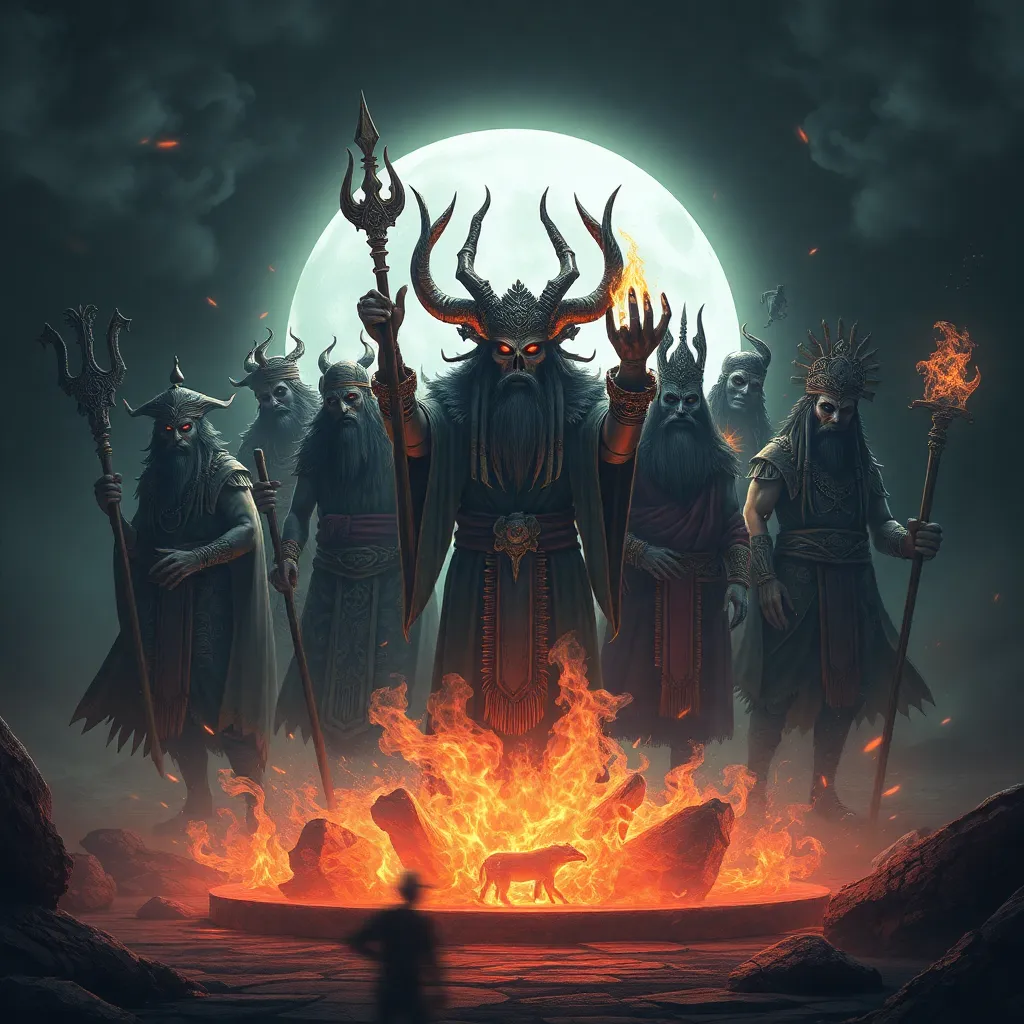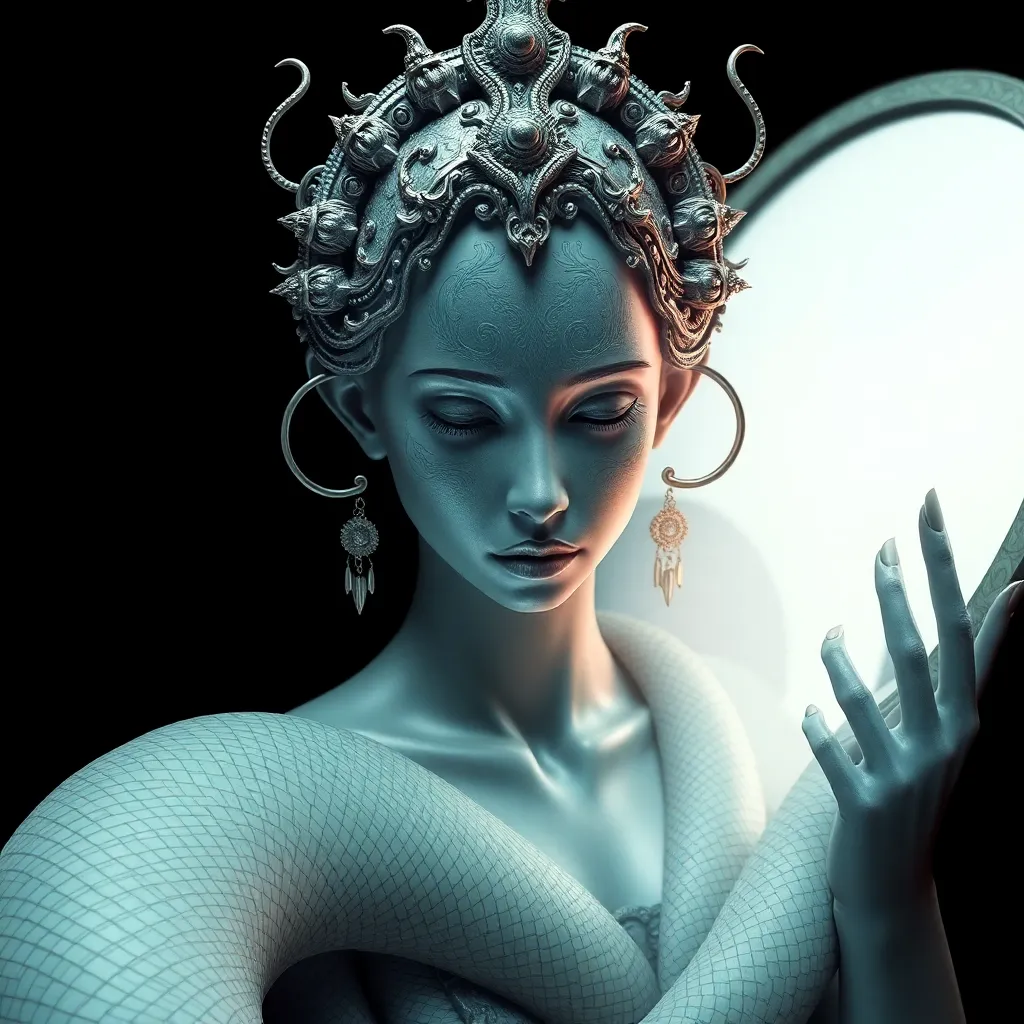The Hundred Hands of Power: Symbols and Meanings of the Hecatoncheires
I. Introduction
The Hecatoncheires, often referred to as the ‘Hundred-Handed Ones’, are fascinating figures in Greek mythology. These colossal beings, with their extraordinary physical attributes, embody themes of strength, chaos, and divine intervention. Their significance in ancient culture extends beyond mere mythology, reflecting societal values and beliefs that were prevalent in Greek society.
This article explores the origins, symbolism, and cultural legacy of the Hecatoncheires, aiming to provide a comprehensive understanding of their role in mythology and their lasting impact on art and literature.
II. Origins of the Hecatoncheires
The Hecatoncheires were born from Chaos, the primordial void from which all existence emerged. According to Hesiod, they were the offspring of Uranus (the sky) and Gaia (the earth). Their family lineage includes notable figures such as the Titans, who were their siblings, and the Olympian gods, who would later play significant roles in their story.
Their birth from Chaos signifies the emergence of order from disorder, a recurring theme in Greek mythology. As primordial beings, the Hecatoncheires represent the raw forces of nature and the universe, acting as guardians of cosmic balance.
III. Physical Attributes and Symbolism
The most striking feature of the Hecatoncheires is their appearance. Each Hecatoncheires possesses fifty heads and one hundred hands, making them formidable entities in both power and presence. This unique physicality serves as a powerful symbol of their strength and capability.
- Fifty Heads: The multitude of heads represents their ability to see and understand numerous perspectives, symbolizing wisdom and vigilance.
- One Hundred Hands: Their hands signify industriousness and the ability to manipulate the physical world, emphasizing themes of creation and destruction.
Their extraordinary physical traits highlight the dual nature of strength: the capacity to protect and the potential for chaos. This duality is a central theme in the interpretation of their symbolism, illustrating the balance between power and order.
IV. The Hecatoncheires in Mythological Context
In the context of Greek mythology, the Hecatoncheires played a pivotal role during the Titanomachy, the epic battle between the Titans and the Olympian gods. The Hecatoncheires allied with Zeus and his siblings, providing the necessary strength to overthrow the Titans, who had previously dominated the cosmos.
Their relationship with the Olympian gods was complex. While they were initially imprisoned by Uranus, their eventual release by Zeus marked a crucial turning point in the battle for supremacy. They wielded immense power, throwing boulders and creating chaos among the Titans, showcasing their importance in the mythological narrative.
Key myths involving the Hecatoncheires include:
- Their imprisonment by Uranus.
- Their release by Zeus, which symbolizes the triumph of order over chaos.
- Their role as guardians of the imprisoned Titans after their defeat.
V. Symbolic Interpretations of the Hecatoncheires
The Hecatoncheires serve as powerful allegories in Greek mythology. Their hundred hands can be interpreted in various ways:
- Allegorical Meanings: The hands symbolize teamwork and collaboration, representing how collective strength can overcome adversity.
- Chaos and Order: As embodiments of chaos, they also illustrate the necessity of order in the universe, reflecting the balance of forces.
- Divine Justice: Their strength is often associated with divine retribution, showcasing the idea that chaos can be harnessed for the greater good.
Through these interpretations, the Hecatoncheires embody the complexity of power, showcasing how strength can be both a blessing and a curse, depending on its application.
VI. The Hecatoncheires in Art and Literature
The representation of the Hecatoncheires in ancient Greek art and sculpture is notable. They are often depicted in reliefs and pottery, showcasing their immense size and strength. The visual portrayal emphasizes their physical attributes, reinforcing their symbolic meanings.
Classical literature and poetry, such as Hesiod’s “Theogony”, provide essential references to the Hecatoncheires. In these texts, they are celebrated as powerful allies of the Olympians, their stories illustrating the themes of conflict and resolution.
Modern adaptations also reflect the continuing relevance of the Hecatoncheires. They appear in various forms of media, including literature, movies, and video games, often reinterpreted to fit contemporary narratives.
VII. Cultural Legacy and Influence
The Hecatoncheires have left an indelible mark on contemporary culture. Their images and stories continue to inspire artists, writers, and creators across various mediums. They symbolize the timeless struggle between chaos and order, resonating with modern audiences.
Their influence extends beyond Greek mythology, with parallels found in other cultures:
- Indian Mythology: Similar beings, such as the Asuras, embody themes of chaos and conflict.
- Mesopotamian Myths: Figures like Tiamat represent primordial chaos and the struggle against order.
This cross-cultural presence underscores the universal nature of the themes represented by the Hecatoncheires, emphasizing the shared human experience of grappling with power and chaos.
VIII. Conclusion
The Hecatoncheires stand as potent symbols within Greek mythology, encapsulating themes of strength, chaos, and the struggle for order. Their significance is not merely historical; it reflects enduring human concerns about power and its implications.
As we reflect on the symbolism of the hundred hands, we recognize their relevance in our understanding of mythology and the human condition. The tales of the Hecatoncheires remind us of the complexities of power and the importance of balance between chaos and order in our lives.



